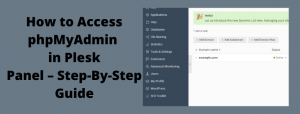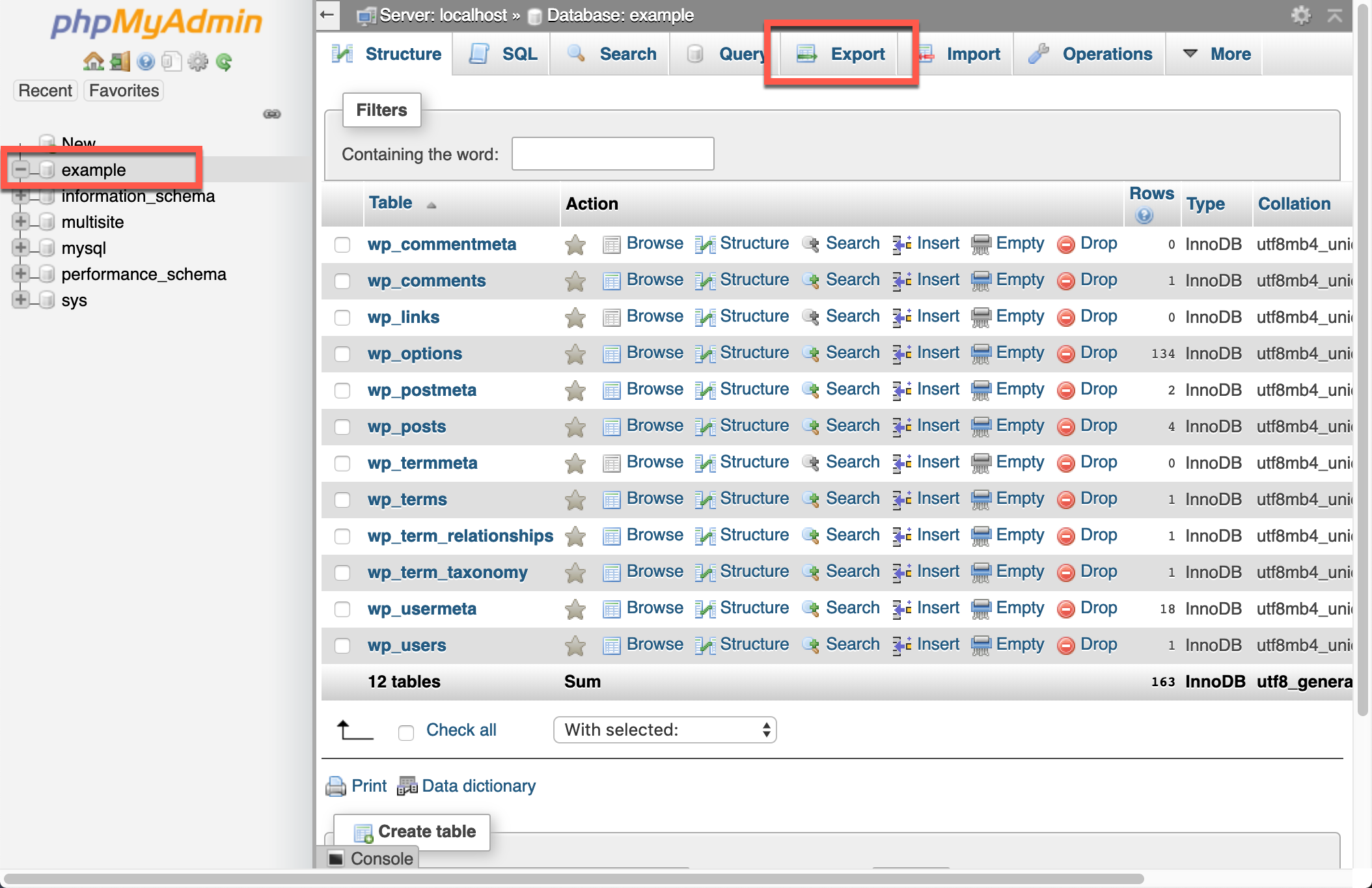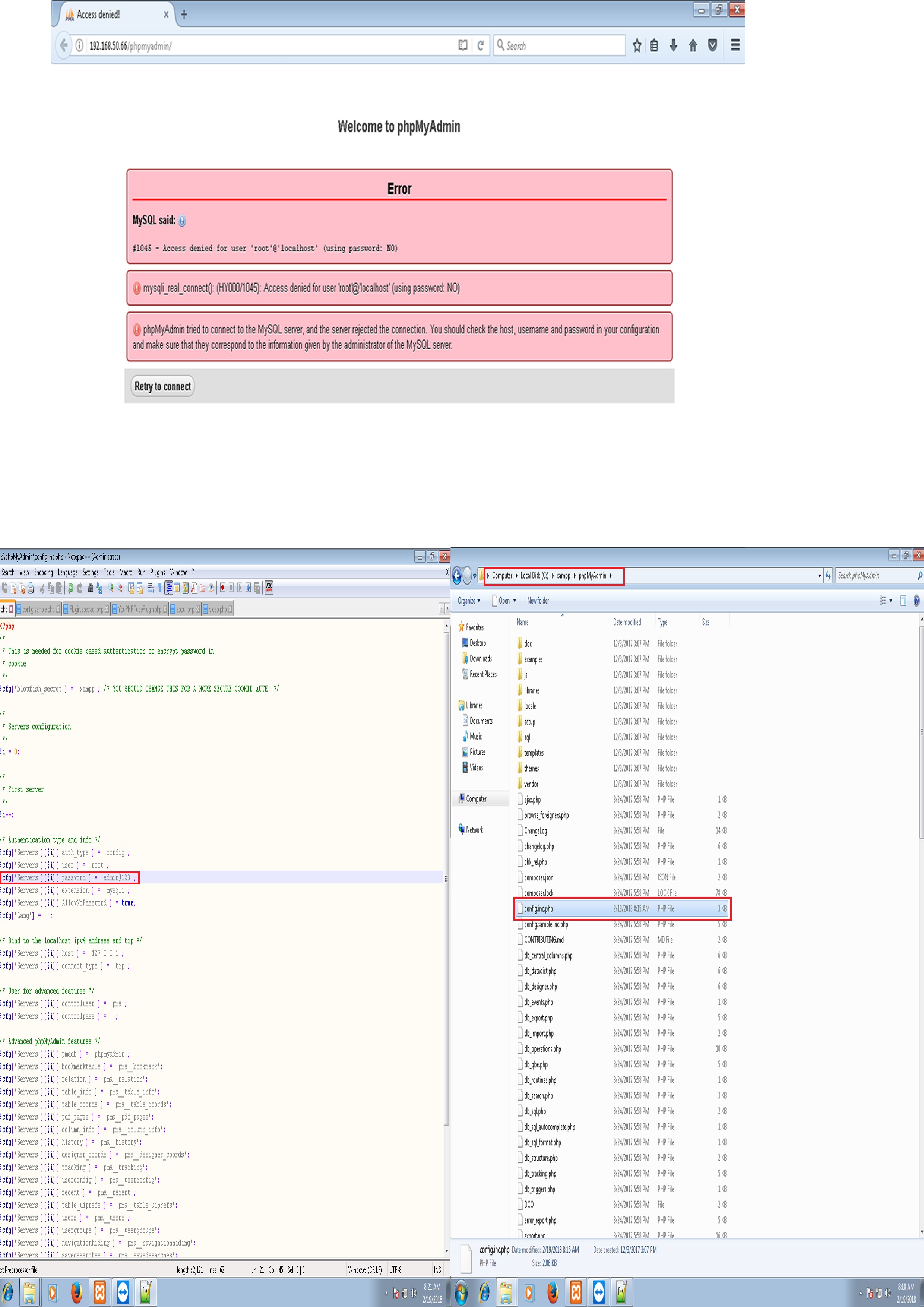

- #ACCESS PHPMYADMIN HOW TO#
- #ACCESS PHPMYADMIN INSTALL#
- #ACCESS PHPMYADMIN UPDATE#
- #ACCESS PHPMYADMIN SOFTWARE#
- #ACCESS PHPMYADMIN PASSWORD#
#ACCESS PHPMYADMIN INSTALL#
INSTALL COMPONENT "file://component_validate_password". #ACCESS PHPMYADMIN PASSWORD#
Once phpMyAdmin is installed, you can open the MySQL prompt once again with sudo mysql or mysql -u root -p and then run the following command to re-enable the Validate Password component: Then try installing the phpmyadmin package again and it will work as expected:
UNINSTALL COMPONENT "file://component_validate_password" įollowing that, you can close the MySQL client:. Note that this won’t actually uninstall it, but just stop the component from being loaded on your MySQL server: Or, if you enabled password authentication for the root MySQL user, run this command and then enter your password when prompted:įrom the prompt, run the following command to disable the Validate Password component. To resolve this, select the abort option to stop the installation process. As of this writing, enabling this component will trigger an error when you attempt to set a password for the phpmyadmin user: Note: Assuming you installed MySQL by following Step 2 of the prerequisite LAMP stack tutorial, you may have decided to enable the Validate Password plugin. For the server selection, choose apache2. Here are the options you should choose when prompted in order to configure your installation correctly: sudo apt install phpmyadmin php-mbstring php-zip php-gd php-json php-curl. 
We’ll walk through these options shortly: Please note, though, that the installation process requires you to make some choices to configure phpMyAdmin correctly. Run the following command to install these packages onto your system. For instance, if you’re using PHP version 8.0, you will need to install the php8.0-mbstring package instead of the default php-mbstring package.
php-curl: Allows PHP to interact with different kinds of servers using different protocolsīe aware that if you’re using a version of PHP other than the default one installed in the prerequisite LAMP stack tutorial, you will need to install the appropriate versions of these module packages. php-json: Provides PHP with support for JSON serialization. php-gd: Enables support for the GD Graphics Library. php-zip: This extension supports uploading. php-mbstring: A module for managing non-ASCII strings and convert strings to different encodings. However, it’s recommended that you also install these packages: If you followed the prerequisite LAMP stack tutorial, several of these modules will have been installed along with the php package. Along with this package, the official documentation also recommends that you install a few PHP extensions onto your server to enable certain functionalities and improve performance. #ACCESS PHPMYADMIN UPDATE#
You can use APT to install phpMyAdmin from the default Ubuntu repositories.Īs your non-root sudo user, update your server’s package index:įollowing that you can install the phpmyadmin package. This will require you to register a domain name, create DNS records for your server, and set up an Apache Virtual Host. If you do not have an existing domain configured with an SSL/TLS certificate, you can follow this guide on securing Apache with Let’s Encrypt on Ubuntu 20.04.
 Executes and returns results for arbitrary SQL queriesįor these reasons, and because it is a widely-deployed PHP application which is frequently targeted for attack, you should never run phpMyAdmin on remote systems over a plain HTTP connection. Handles authentication using MySQL credentials. Communicates directly with your MySQL installation.
Executes and returns results for arbitrary SQL queriesįor these reasons, and because it is a widely-deployed PHP application which is frequently targeted for attack, you should never run phpMyAdmin on remote systems over a plain HTTP connection. Handles authentication using MySQL credentials. Communicates directly with your MySQL installation. #ACCESS PHPMYADMIN SOFTWARE#
If this is not completed yet, you can follow this guide on installing a LAMP stack on Ubuntu 20.04.Īdditionally, there are important security considerations when using software like phpMyAdmin, since it:
 A LAMP (Linux, Apache, MySQL, and PHP) stack installed on your Ubuntu 20.04 server. To set this up, follow our initial server setup guide for Ubuntu 20.04. This server should have a non-root user with administrative privileges and a firewall configured with ufw. In order to complete this guide, you will need:
A LAMP (Linux, Apache, MySQL, and PHP) stack installed on your Ubuntu 20.04 server. To set this up, follow our initial server setup guide for Ubuntu 20.04. This server should have a non-root user with administrative privileges and a firewall configured with ufw. In order to complete this guide, you will need: #ACCESS PHPMYADMIN HOW TO#
In this guide, we’ll discuss how to install and secure phpMyAdmin so that you can safely use it to manage your databases on an Ubuntu 20.04 system. PhpMyAdmin was created so that users can interact with MySQL through a web interface. While many users need the functionality of a database management system like MySQL, they may not feel comfortable interacting with the system solely from the MySQL prompt. An earlier version of this tutorial was written by Brennan Bearnes.








 0 kommentar(er)
0 kommentar(er)
